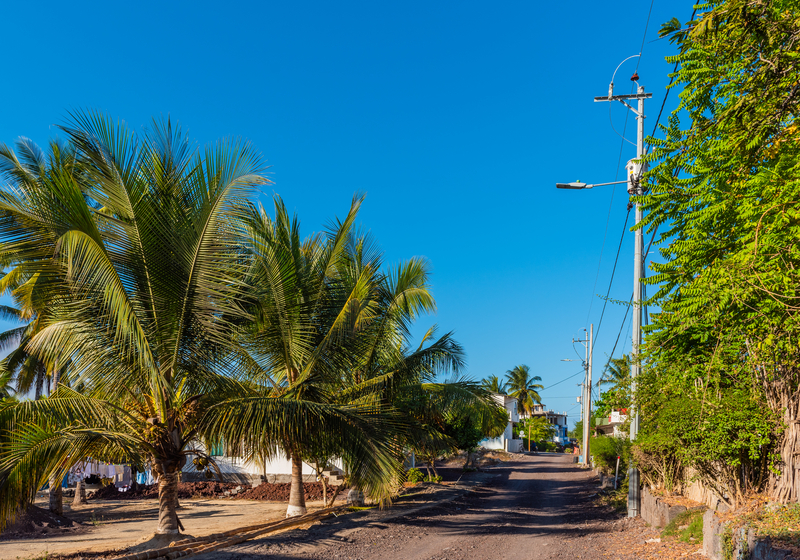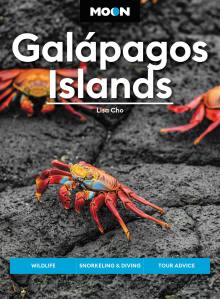Getting around the Galápagos Islands
Getting around the Galápagos is easier than it used to be. If you have booked a tour, you don’t need to worry about this because all transfers, shuttles, and cruises are prearranged.

Traveling Between the Islands
Boat
Traveling between islands is easier nowadays, with daily services on small speedboats connecting Santa Cruz with San Cristóbal, Isabela, and Floreana. All routes cost $30-35 per person one-way and take 2-2.5 hours, depending on the sea conditions. The $35 ferries (Gaviota, Sigiloza, Wolf ) typically have individual seats that face forward rather than benches that face the interior of the boat, which make them slightly more comfortable. The boats are often referred to as ferries, but they are speedboats and designed for speed rather than stability. The ferries leave Puerto Ayora for San Cristóbal and Isabela at 7am and 2pm. The reverse trip from Isabela to Puerto Ayora leaves at 6am or 3pm. The reverse trip from San Cristóbal to Puerto Ayora leaves at 7am and 2pm. Ferries depart Puerto Ayora for Floreana at 8am and start the return trip from Floreana to Santa Cruz at 3pm. It’s generally recommended to arrive 30 minutes early in order to pass luggage inspection, pay dock taxes, and get in line for boarding.
Usually, several boats run each day between Isabela, Santa Cruz, and San Cristóbal. Getting to and from Floreana is trickier; the ferries only run three or four times a week, and the schedule isn’t fixed to any particular day of the week. It’s best to ask at the nearest travel agency. Ferries can get booked up, so reserve one day in advance. Unfortunately, there are no public direct services between San Cristóbal, Floreana, and Isabela; all the boats stop or connect in Santa Cruz.
You will have to get your luggage inspected by SICGAL prior to boarding the boat. Similar to the luggage inspection when you arrive in Galápagos, you must declare any products of plant or animal origin including food like produce, meat, eggs, and fish.
It can be a bumpy ride, particularly in the afternoon and in June-September when the seas are at their roughest. To minimize seasickness, don’t eat a big meal beforehand, take seasickness pills in advance if necessary, try to get a good seat, and watch the horizon.
The best seats are in the back of the boat. Since this part of the boat is lowest in the water, it tends to rock the least, though it tends to have the loudest engine noise. The worst seats as far as seasickness goes are in the interior cabin, especially toward the front. On some boats, you can also sit on the second-floor cockpit by request, where there is less engine noise, a strong breeze, and a view of the horizon to minimize seasickness, although it does rock a lot. Seats are first-come, first-served, so try to line up and board early to get a good one. Pro tip: Try to be seventh or eighth in line at the dock; everyone takes a water taxi to get onto the speedboat, then the water taxi disembarks in reverse order. The last person on the water taxi is the first person on the speedboat.
Interisland Flights
If you want to avoid the discomfort of the public ferries and have the budget, take an interisland flight. There’s currently only one airline, Emetebe; you can book from abroad or travel agencies in the ports in Galápagos. Small eight-seat planes fly daily half-hour routes among San Cristóbal, Baltra, and Isabela. Airfares start at $160 one-way, $260 round-trip. The San Cristóbal to Isabela route is the best deal, since for the same price, it avoids two two-hour trips on the public ferries. If you’re already in Puerto Ayora and take the flight from Baltra to either San Cristóbal or Isabela, it doesn’t save much time compared to the public ferry (including an hour to get from Puerto Ayora to Baltra). Base fares vary by luggage weight, so pack light or be prepared to pay a little extra.
Getting Around Each Island
The principal ways you’ll get around Galápagos are your own two feet and taxi. Public transportation is limited to just a couple routes. There are no car rental agencies on the islands, so you won’t be able to drive yourself around; locals sometimes ride motobikes, but these generally aren’t rentable either.

Walking
If you’re staying in the main towns in each port, it’s very easy to walk around as the towns are not large. Puerto Ayora is the largest town geographically speaking, at about 3 kilometers (1.9 mi) from one side to the other; Puerto Velasco Ibarra is the smallest, just a few blocks in each direction. Sidewalks aren’t always in great condition inland, so watch where you’re going. The good news is that traffic is generally very minimal (aside from a couple main roads), and pedestrians frequently cross the road wherever or sometimes walk in the road. The streets are paved in the two most developed islands (Santa Cruz and San Cristóbal), and you’ll find dirt roads in town on Isabela and Floreana.
Bus
Bus services are limited on the islands. There are buses on Santa Cruz from Puerto Ayora to Bellavista and Santa Rosa that run several times a day, though these highland towns aren’t necessarily tourist destinations. There is also an airport bus that only runs a couple times a day; plan ahead because departure times are poorly coordinated with flights. Bus service on the other islands is much more limited and less useful, though there are a few exceptions, such as the chiva (an open-air bus) on Floreana.
Camionetas (Taxis)
In each of the three main ports, white camionetas (pickup trucks) are available for hire, and most destinations in town cost $1.50-2. Trips into the highlands by taxi cost $60-80.
Biking
It’s better for the environment to vote with your feet and either walk or rent a bike ($15/ day or $3/hour, deposit usually required) rather than taking a taxi. It is the most popular way to explore Los Humedales on Isabela. You can also explore parts of the highlands of Santa Cruz, San Cristóbal, and Isabela by bike (though this generally depends on a taxi or bus drop-off with the bike). To make the trips a little easier, e-bikes are also available in Galápagos for an additional cost ($20-40/ day) and can vary widely from a one-hour battery life to models with good specs suitable for exploring. Puerto Ayora is currently the only town that has the higher-performance models available, at a higher cost of course.
Related Travel Guide
Pin for Later


